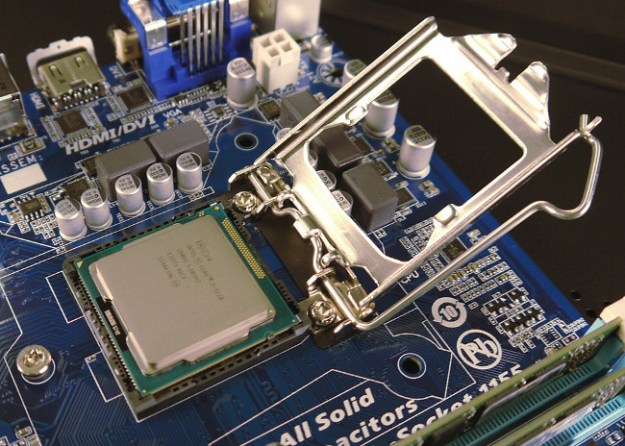
A few weeks ago, we built our own Steam Box with several goals in mind. We wanted to publish a clear, comprehensive guide to help our readers build their own Steam Box – but we also wanted to learn more about the hardware, the pricing, and how well Steam works on Linux. This is why we focused on a conservative, low-end gaming computer rather than a powerhouse.
And learn we did. Our project illuminated a number of problems that Valve is no doubt struggling with, yet also hinted at how those problems may be handled. And we’ve also chosen a reader who will be able to call the Steam Box his own.
Using off-the-shelf parts is a problem

One potential advantage of a Steam Box is the use of “off-the-shelf” parts. Unlike the proprietary hardware used by a console, any Steam Box besides the inexpensive streaming box (which is likely based on an ARM processor, and also unlikely to come out any time soon) would be built from parts that are easy to get. This would make Valve’s console upgradable, modular, and open in a way consoles have never been.
Yet this vision introduces major hurdles. During the planning stage of our build, we quickly realized that there were some areas where we couldn’t cut costs as much as we’d like. Take the power supply for instance. We needed a large and reliable power supply to provide juice for the video card, and that meant choosing an Antec unit priced at $40. Going smaller was possible, but the price was higher still.

This is not to say that Valve will be buying consumer parts at consumer prices, of course. But Valve clearly states that it won’t be the only one building a Steam Box. In fact, our jaws would drop to the floor if Valve was directly involved in manufacturing at all. What seems to be happening, and what’s most likely, is that Valve will pen a series of partnerships with different hardware companies that are building different models, and commonly available parts will be used to build those models.
Console manufacturers, by contrast, have a hand in design that drills right down to the architecture used by the CPU and GPU. Microsoft, Nintendo, and Sony employee engineers who design and modify silicon for each company’s console. This attention to detail is necessary to offer a powerful system with low power draw at a low price.
Valve decided to design at a higher level and hopes that an open (but less efficient) ecosystem can beat one that’s closed. Even if the company’s right, this approach will create consoles that are less powerful and/or larger than we’ve seen in the past.
Valve can offer price or performance, but not both

Every computer is bound by physics. To do work, the computer must draw energy. Nothing in this universe is 100 percent efficient, so some of that energy is lost to heat. Increasing performance increases power draw, which also increases heat, so the computer must combat that increase with cooling (which is easy, but creates noise and takes up space) or improved efficiency (which is expensive and difficult).
Efficiency can only be changed by improving a chip’s architecture or the process used to produce it. Valve has no hand in that, so cooling is the only option. This means that making a Steam Box small, powerful, and inexpensive will be a challenge. Gabe Newell himself admitted this when he told a BBC reporter that “There are noise issues and heat issues and being able to deal with that while still offering a powerful enough gaming experience is the challenge in building it.”
We’re sure a lot of effort will be put into making the Steam Box small and powerful, but reality has its limits. We decided to use a mid-tower for our build because we couldn’t see a way to keep the system under $500 while also offering a powerful processor and video card. Yet our imagining of the Steam Box has only a Radeon HD 7770, a low-end card by today’s standards. Sony’s PlayStation 4 will ship with an equally powerful GPU and far more memory – not to mention the performance benefit of a custom console OS.

Many consumers expect a Steam Box to enter the market at $300, and Valve itself has referenced that price point, though nothing is confirmed. However, a system sold at that price would almost certainly have disappointing hardware. The give-and-take of price and performance is a challenge for all console manufacturers, but it will be particularly difficult for Valve.
Linux works well, but game compatibility is a problem

True to concept, we used Linux with our build instead of Windows. We didn’t even include an optical drive; instead, we installed the operating system (Ubuntu) via a USB flash drive. The process of installation was shockingly smooth and the computer was ready to game in less than thirty minutes. We think that Linux can serve as a stable, quick platform for Steam.
But that doesn’t mean anyone will make games for it. Only five titles out of our large Steam library were playable on Linux, and four out of those five were titles developed by Valve. There are 140 Linux games available on Steam, which sounds like a decent number – until you look at the nearly 2,000 games sold for Windows. Even OS X can run over 600 titles available on Steam.
And there’s another problem. Most of the games that work for Linux are indie games built for the PC, which means they don’t play well (or at all) with a gamepad. Games that work with a gamepad are typically console ports that only arrive on Windows. Valve has said it’s working on a controller and, given the current game selection, we can see why. Few games available for Linux are playable with available gamepads.
PC hardware will mean a PC business
Valve can’t afford to enter the console wars with traditional tactics.
Many gamers think that Valve will follow the traditional console business model. The company will put out a very cheap and powerful system, lose money on it, and hope to make that money back in sales of games.
That’s unlikely for several reasons, the most important of which is Valve’s focus on making the platform open. If Valve were to create its own branded console, and then sell it at a loss, the so-called open platform would be dead at birth. Hardware partners wouldn’t sign up because they’d also have to sell at a loss to compete. But hardware partners don’t make money from game sales, so they’d never see a profit.
Instead of operating like traditional console manufacturers, Valve will operate like Microsoft. Anyone will be able to make hardware or software for Steam. Valve’s job will be the maintenance and improvement of Steam itself as not only a store but also a gaming OS.

This means that the hardware will be more expensive than a traditional console, but it also means that games will cost far less and that a variety of peripherals will be available. Valve won’t enforce any price ceilings or floors and won’t charge partners an expensive license fee to start working on a project for Steam.
Another benefit of this model is a lack of dependence on console sales. If all the hardware sells at a profit, and the games sold are available on both Windows and Linux, then the volume of consoles sold isn’t as important. Valve will make more money if more are shifted, of course, but there are few new costs to support with new sales.
This is important because Valve is not a large company. Even Nintendo, the smallest console manufacturer, has ten times more employees. Valve can’t afford to enter the console wars with traditional tactics.
Conclusion
Valve’s approach to the Steam Box is clever. Instead of investing huge amounts of money into proprietary hardware, the company is betting that an open platform that depends on hardware partnerships can upset the traditional console order.
Individually, a Steam Box isn’t as impressive as a next-generation console, but gamers who go for Valve’s system will be able to select from numerous consoles and have access to games at low prices. This will no doubt appeal to a niche of gamers, and that’s okay, because low initial sales won’t ruin Valve’s plan.
With that said, our build revealed some flaws in the idea. Console manufacturers have always chosen to use proprietary hardware because this is the only way to build a product that clearly out-classes the competition, and that edge won’t disappear in the next generation.
Yes, the Steam Box is powerful compared to current consoles, but new hardware from Microsoft and Sony is due later this year. Worse, Valve will be launching its first console amidst strong marketing campaigns from these two giants. The Steam Box could simply be lost in the noise.
We can’t help but feel the Steam Box is a product that should have been released last summer. The idea is unique, and our build proved that it’s possible to build a capable system that runs Steam on Linux for a modest sum. But capable as it is, our system will pale in comparison to consoles that arrive this winter, and game support through Linux is a serious handicap that’s unlikely to be resolved within the year. The Steam Box has potential, but don’t be surprised if it sputters at launch.
And the winner is…
Finally, it’s time for us to announce the winner of our Steam Box from the readers who weighed in to tell us how much they think the Steam Box should cost and when it will be released. Everyone’s thoughts were helpful, but the winner of the Steam Box is Newjack89! Congrats!



